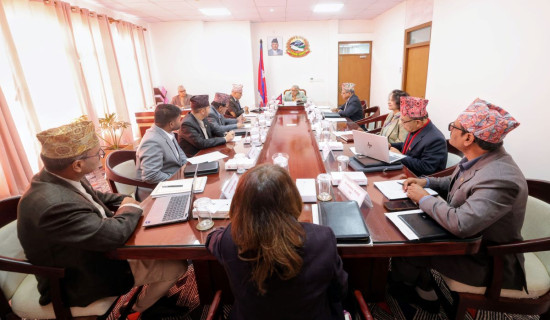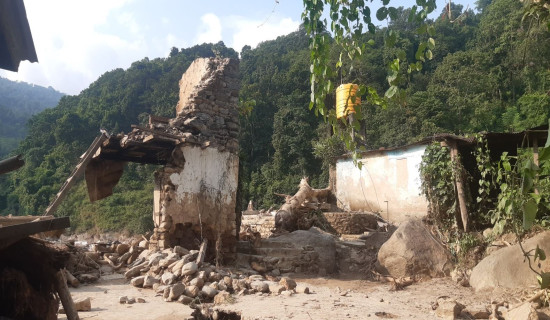- Monday, 15 December 2025
Multichannels Fragment Audience
Idealised and idolised since more than 200 years as the fourth power (fourth estate), newspapers and their later-day cousins in the broadcast landscape, followed by digital channels in the new millennium, are seen as contributing to making or marring individual and institutional images just as they highlight issues that impact sizeable sections of audiences.
Agendas thrust upon, and issues diverted or distorted in the name of gatekeeping at a time when prominent journalists in the West have begun dismissing “two-sides-ism” as outdated and impractical, do not bode well for maintaining objectivity. Little wonder that a Gallup poll in 2022 showed that Americans tend to trust newspapers significantly more than television.
American media critics are concerned over journalism losing considerable public trust. A Gallup poll has found that only 16 per cent of Americans have a “great deal” or “quite a lot” of confidence in newspapers. This was down from 25 per cent in 2012 and 35 per cent in 2002. And now comes the era of multi-channels in the communication landscape inaugurating a variety of content choices, which enables the publics to pick their options in accordance with personal needs and specific interests. Time being a restrictive factor for any living being, receivers give their attention to the media contents that serve their interests the best.
The theory of multiple media choices and audience migrations sees the fragmentation of audiences as an inevitable effect. Multiple avenues encourage migration to new interests and communication channels, as curiosity expands and options cater to varied desires. Options are always power for audiences, who are liberated from few or censored choices. Dissenting views find space for their case. The theory would be that variety in options offers opportunities for individuals and groups to cultivate tastes they previously had not developed or could not address for lack of platforms. In the digital age, they can develop habits and cultivate tastes they previously hardly ever dreamt of. Opportunities are now accessible for acquiring new knowledge and skills that satisfy curiosity, address needs or do both.
Complete dependence on few channels gets loosened in a sphere of multiple choices. The publics are offered a range of services through multiple and easily available channels, often at reasonably affordable prices. Content narrowcasting and fragmentation of information seekers create competitive climes for the news media. Specialised news and views, should enable the channels to focus on effective purposes. This way they reach the right audience with greater effect and speed. The era of general news channels, carrying newsworthy something of everything is dimming fast. New generations cultivate specific interests and tastes.
When a content is narrowcast, it is likely to draw the right audience with the right focus. This helps advertisers to identify the type of audience a channel fetches for commercial advertising. Putting profit before people and prioritising commercial interests over public credibility result in media capture by vested interest groups that monopolise agenda-setting and gatekeeping. Foreign funds support sensitive issues in many developing countries. Many INGOs and aid agencies dole out favours to create conditions that suit their agendas. On failing to obtain explicit support from intended target, they strive for buying media silence. If foreign donations influence local decisions, they can also influence elections and agenda-setting.
Journalism seeks newsworthy information whose value is based on the impact it creates, with the prime purpose of informing society by explaining various complex issues for clear understanding. Journalism catering to the interests of a relatively small audience is known as niche journalism that focuses on issues one or few subjects, such as food, fashion, cinema, cricket, crime, economy, football, politics, travel and tourism. Credible media serve as reliable points of reference. Regarding the 1990 Iraq war, American television journalist Lesley Stahl points ¬out: “The news media became so unpopular that at one point 62 per cent in a Washington Post poll said that the Allies should bomb a Baghdad hotel even if it were filled with Western reporters. More than 80 per cent told the Gallup Poll that they approved of tight restrictions on the media.
Critical review
Gallup Poll in 2022 showed that Americans tend to trust newspapers significantly more than television. But their number is less than half the US population. American media critics are worried over journalism losing considerable public trust. The Nepali media allocate liberal space for entertainment but quite a few of them give Hollywood moviedom too much space, forgetting that movies in English are hardly ever screened at the cinema theatres anywhere outside Kathmandu Valley. The economy pages, likewise, carry news confined to the activity of only a few of Nepal’s 77 districts. Agriculture, the mainstay of the country’s economy, rarely gets a main story spot or space in editorials and opinion pieces.
The widely cited Reporters Without Borders (RSF) ranks Nepal top among its South peers regarding press freedom index. Its report for 2024 places Nepal 74th, the Maldives 106th, Bhutan 147th, Sri Lanka 150th, Pakistan 152nd, India 159th, Bangladesh 165th and Afghanistan 178th in a list of 180 nations. The globally cited report expressed concern over decline in media autonomy on account of pressure exerted by the state and other actors.
Multiple-channel media landscape means environment for greatly reduced big media house hegemony. Its array of options paves the pathway to more focused contents and opportunities for audiences to veer to greater concentration on their choicest interests. Cohesive approach and cooperation create bonds for mutual benefit and trust without losing the opportunity to exchange candid views. Limited market for general news, whose saturated existence drives advertisers away, calls for focused contents that help identify the composition of content receivers better. As the advertisers have budgetary limitations, they would want the best for the money they spend in publicity commercials and brand promotions.
South Asian Public Service Broadcasting (SAPBS) can be initiated for greater connectivity. We need to wake up from the long slumber. Is SAPBS idea sound or a utopia, removed from the language of probability? If so, therein lies the cascade of constraints. I would like to believe that South Asia will wake up to the call of the times.
(Professor Kharel specialises in political communication.)

















